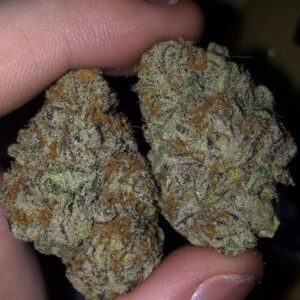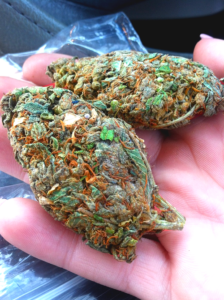
Cannabis in Baar, Switzerland: Legal Landscape, Local Industry, and Future Outlook
Introduction
Cannabis, often referred to as marijuana or weed, has been a subject of legal and social debate worldwide. In Switzerland, the legal status and use of cannabis vary across cantons, with Baar in the canton of Zug being a notable example of evolving policies and industry developments. This article delves into the current legal framework surrounding cannabis in Baar, examines the local cannabis industry, and explores the potential future of cannabis use in the region. Weed in Baar
Legal Status of Cannabis in Switzerland Weed in Baar
Switzerland’s approach to cannabis is nuanced, balancing public health concerns with evolving social attitudes. The Federal Narcotics Act (LStup) classifies cannabis with a tetrahydrocannabinol (THC) content of at least 1% as a prohibited substance. However, cannabis products containing less than 1% THC, commonly known as CBD cannabis, are legal and widely available in Switzerland (ch.ch).
Decriminalization of Minor Possession Weed in Baar
Since 2012, the possession of small amounts of cannabis (up to 10 grams) for personal use has been decriminalized in Switzerland. Instead of facing criminal charges, individuals found with such quantities are typically subject to a fine of CHF 100. This policy aims to reduce the burden on the judicial system while acknowledging the widespread use of cannabis (Wikipedia).
Medical Cannabis Regulations Weed in Baar
Medical cannabis, containing higher levels of THC, is permitted in Switzerland under strict regulations. As of August 1, 2022, Swiss physicians can prescribe medical cannabis directly without prior authorization from the Federal Office of Public Health. This change has facilitated easier access for patients with conditions such as chronic pain, multiple sclerosis, and nausea associated with chemotherapy (Swisscann Tec).
Cannabis Industry in Baar Weed in Baar
Baar, a town in the canton of Zug, has emerged as a significant hub for the cannabis industry in Switzerland. The region is home to several companies specializing in the cultivation, processing, and distribution of cannabis products.
SwissExtract: A Leader in CBD Cannabis Production Weed in Baar
SwissExtract, founded in 2017 and based in Baar, is a prominent player in the Swiss cannabis industry. The company specializes in high-quality CBD cannabis products and is involved in the entire production process, from cultivation to labeling. SwissExtract’s commitment to quality is evident in its adherence to strict regular controls by independent laboratories (SwissExtract).
Medical Cannabis Production by Swisscann Tec
Swisscann Tec, headquartered in Zurich with a production facility in Glattfelden, is another key contributor to Switzerland’s cannabis industry. The company focuses on the production and distribution of THC-containing medical cannabis products. Swisscann Tec’s state-of-the-art facility meets Good Manufacturing Practice (GMP) standards, ensuring the highest quality and safety for medical cannabis products (Swisscann Tec).
Future Outlook: Towards Full Legalization?
Switzerland is gradually moving towards a more liberal cannabis policy. In 2025, the Federal Council initiated a consultation process for the Cannabis Products Act, which aims to regulate the cultivation, sale, and consumption of cannabis for recreational use. If enacted, this legislation could pave the way for a fully regulated cannabis market in Switzerland, aligning with trends observed in other European countries (Wikipedia).
FAQs
1. Is cannabis legal in Baar, Switzerland?
Cannabis products containing less than 1% THC are legal in Baar, as in the rest of Switzerland. However, cannabis with higher THC content remains prohibited unless prescribed for medical use.
2. Can I grow cannabis in Baar?
Individuals in Baar are permitted to cultivate cannabis for personal use, provided the THC content does not exceed 1%. It’s essential to stay informed about local regulations and any changes to the law.
3. Are there cannabis dispensaries in Baar?
While Baar is home to companies like SwissExtract, which produce cannabis products, there are currently no dedicated cannabis dispensaries in the town. However, CBD cannabis products are available in various retail outlets across Switzerland.
4. What is the future of cannabis legalization in Baar?
The future of cannabis legalization in Baar is closely tied to federal legislation. The ongoing consultation for the Cannabis Products Act suggests a move towards full legalization, which could impact Baar’s local policies and industry landscape.
5. How can I stay updated on cannabis regulations in Baar?
To stay informed about cannabis regulations in Baar, consider subscribing to updates from the Federal Office of Public Health and local government websites. Engaging with local community groups and industry associations can also provide timely information.
Outbound Links
- Swiss Federal Office of Public Health – Cannabis Regulations
- SwissExtract – Company Overview
- Swisscann Tec – Medical Cannabis Production
- Wikipedia – Cannabis in Switzerland
Conclusion
Baar stands at the forefront of Switzerland’s evolving cannabis industry. With its progressive policies and home to leading cannabis companies, the town exemplifies the country’s balanced approach to cannabis regulation. As Switzerland moves towards potential full legalization, Baar’s role in shaping the future of cannabis use and industry development will likely continue to grow. Staying informed and engaged with ongoing legislative changes will be crucial for residents and businesses alike.
Practical checklist for Baar residents (quick reference)
- Inspect new soil, compost and garden plants before bringing them home.
- Pull or remove seedlings before they set seed; bag and dispose of seed heads responsibly.
- If you find knotweed, hogweed or other regulated invasives, photograph, record the location and notify your local municipal office — early action prevents larger future costs. (Cipel)
- Use mulches, dense planting and proper lawn care to keep weeds at bay in home gardens.
- For large infestations, consult professional removal services familiar with legal disposal and bank restoration.
Case studies / anecdotes (what works elsewhere)
Communities around Swiss lakes and in European riparian corridors have successfully reduced invasive pressure through combinations of excavation (knotweed), replanting with natives, and multi-year monitoring. Agricultural regions that adopt diverse crop rotations and cover cropping see reductions in some annual weed problems over time. Experiences show that persistence and coordination — not one-off fixes — deliver the best outcomes.
Where to learn more and get local help
Start with Baar’s municipal information pages for local rules and contact points for environmental services; canton-level resources (Zug) and national plant protection agencies offer guidance on regulated species, disposal protocols and approved control measures. For identification, regional botanical societies and field guides specific to Swiss flora are invaluable. (Municipal and canton sites supply practical local guidance for residents and businesses.) (baar.ch)
Final thoughts: living with and managing weeds in Baar
Weeds are symptoms of landscape processes — disturbance, connectivity and changing land uses. In Baar, where agriculture, forest and urban life intermix, a thoughtful, localised approach that emphasises prevention, early action, community coordination and restoration offers the greatest chance of keeping harmful weeds under control while preserving biodiversity and the many benefits of green space. Whether you’re a gardener, a farmer, a council official or a walker along the Lorze, your choices — what you plant, what you bring home, how you dispose of garden waste — make a difference. Tackle small problems early, favour ecological solutions where possible, and work with neighbours and municipal services for the larger challenges.
I have used Global Weedworld (Globalweedworld@galaxyhit.com) at least 4-10 times and every time it has been a top notch.
He is the best local plug you can find around. He is very pleasant, friendly and fast. He is a lifesaver.
He sells top shelf WEED and other stuffs at moderate prices. I will always recommend this guy when people ask me my ” go-to”.
All you have to do is follow his instructions.
Just send him an email and I bet you will come back for more once you finish with what you bought because his quality is amazing.
Also Contact him on his telegram link telegramhttps://t.me/GlobalweedWorld
⚠️ Know that he do not have telegram channels only the telegram link above

The strain was exactly what I was looking for. It had that perfect balance, and the high was smooth. Also, the packaging was discreet and professional. Really impressed
I’ve been buying online for a while, but this shop’s service and product quality set them apart.
Everything was fresh, potent, and the customer service is outstanding
My first purchase and I’m hooked.
Excellent product and the customer support was super helpful in answering all my questions. Highly recommend this site
From browsing to checkout, everything was seamless. Delivery was on time, and the product exceeded my expectations.
I’ll be recommending this to my friends
told me that he doesn’t accept cash and i thought he is one of those idiots who took advantages of people but i decided to give him a try by making the payment first using bitcoin, surprisingly he arrived within the time he promised me and i received what i ordered. thank you, Global weed world, whenever i return here you will always be my plug without doubt.
I’ve been buying from a lot of different places, but this one stands out. The bud is top-notch, and the prices are reasonable.
Will be ordering again soon! Amazing experience! The product was exactly as described,
and the packaging was on point—safe and odor-free. Thank you!
Delivery was crazy fast, and the product… This place is setting the bar for online weed shops. Keep doing what you’re doing. You’ve got a loyal customer for life.
Best decision I made all week. Real ones know. This site is fire. I don’t usually leave reviews, but this deserved one.
Third order in a row — flawless. Told my friends — now they’re ordering too. This is how weed buying should be. Clean, easy, reliable.
I was worried about ordering online, but the packaging was perfect completely. You can tell they care about their customers. Fast replies and reliable support.